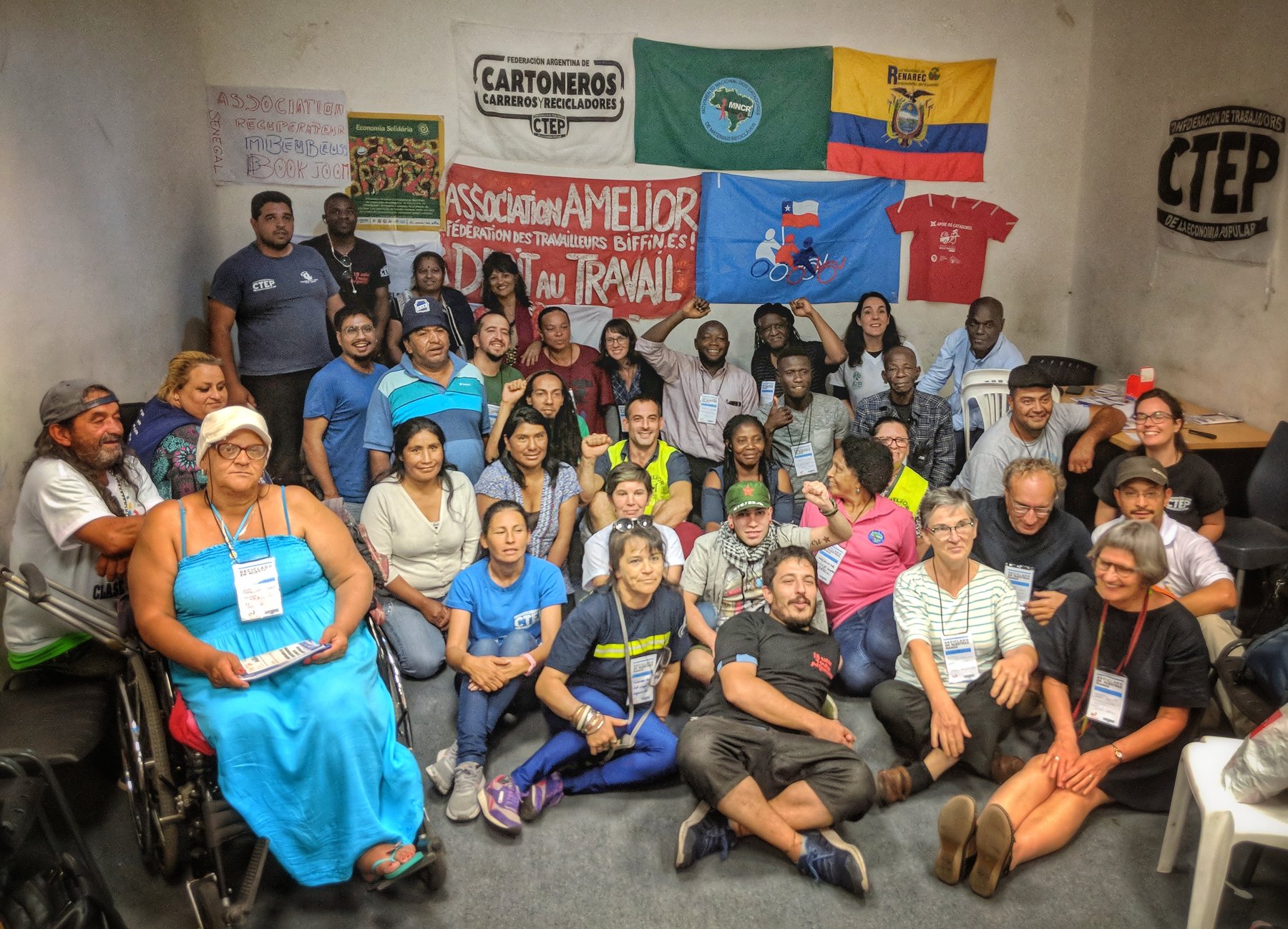Presentation of the International Alliance of Waste Pickers (AIR) and its newly elected officers at the Felipe Vallese hall of the CGT.
Address: 802 Azopardo Street, Buenos Aires. Argentina
Date: May 3rd, 2024
Time: 18:00h
To present the International Alliance of Waste Pickers and the newly elected positions of President, Vice-President and Treasurer, we will hold a public event at the Felipe Vallese Hall of the General Confederation of Labor (CGT)Argentina. We will be accompanied by authorities from both the CGT and the Union of Popular Economy Workers (UTEP). The media and our guests to the Congress are also invited.
In addition to the presentation of the election results, we will also be able to present the new resolutions approved by our delegates during the Congress.
What is the CGT?
The General Confederation of Labor (CGT) was founded on September 27, 1930. In a context of strong growth of the industrial sector in Argentina, the CGT emerged as the predominant center of the labor movement. Inspired by the French CGT, the leaders of the time adopted its name.
During the 1940s, the link between Juan Domingo Perón, President of Argentina (1946-1955 and 1973-1974) and the CGT was strengthened. In 1943, Perón, as the head of the Secretary of Labor, established a solid alliance with the union sector, enacting landmark labor laws in response to the demands of the labor movement. The CGT was key in the historic mobilization of October 17, 1945, where millions of workers demanded Perón’s release. After his first election as president in 1946, Perón promoted labor laws that redistributed national income, thus strengthening the power of the CGT, which grew from 80,000 members in 1943 to 4 million in 1955.
The 1950s were marked by growth and persecution. In 1952, with the death of Eva Perón, her remains were taken to the CGT headquarters. In 1955, the proscription of Peronism led to a military coup that culminated in the bombing of the Plaza de Mayo and the intervention of the CGT. Felipe Vallese, a young UOM delegate, disappeared in 1962, and became the first detainee-disappeared of the labor movement.
During the military dictatorship (1976-1983), the CGT resisted and led protest measures. It was a big strike that shook the military dictatorship and precipitated the return of democracy. The CGT, with Saul Ubaldini at its head, declared the first general strike in 1979 to protest against neoliberal economic policies when the military seemed invincible and, in 1982, under the slogan Peace, Bread and Work, another CGT strike gave the coup de grace to the dictatorship that fell a few months later.
All these traditions of struggle are still alive in the memory of the people and in the daily battles for dignity because even today there are still slaves, there are still serfs and oppressed peasants, there are still persecuted native peoples and exploited workers. The excluded, the new proletariat, adds a new category to the collection of social injustices that emerge from the ambition and appropriation of common goods by a few.
Its commitment to international solidarity has led the CGT to work closely with trade unions and labor organizations around the world. Through these efforts, the CGT seeks to strengthen the voice of workers globally and promote an agenda of social justice and equity.
We, the wastepickers of Argentina, are affiliates of the Union of Popular Economy Workers through the FACCYR. The popular economy encompasses 30% of the economically active population in Argentina, representing at least 6 million people, of which only 1 million are organized. UTEP brings together these workers who did not have an institutional space to express their claims and win their rights collectively. More information about UTEP can be found in the Visits Booklet of the 4th.
Felipe Vallese Building and Hall
The CGT building located at Azopardo 802, San Telmo, is considered Historical Heritage of the Argentine Republic, and has been nominated for recognition by UNESCO to be considered World Heritage of Workers.
We will make our official presentation of authorities of the International Alliance of Waste Pickers in the Felipe Vallese Hall, one of the most important symbols of the CGT. This hall bears the name of one of the most outstanding martyrs of the Argentine trade union movement and serves as a reminder of the struggle and sacrifice of those who have dedicated their lives to the cause of the workers. Important milestones in Argentina’s labor history have taken place within these same walls.
We will count on the participation of important figures of the Argentine labor movement, both from the CGT and UTEP, to accompany us in the construction of our own history as the International Alliance of Waste Pickers.



